MISERIES, MOLLYGRUBS, AND MOPING:
THE FOULNESS OF FEBRUARY
At some point in many episodes of the somewhat silly, cornpone crazy, and undeniably delightful television program “Hee Haw,” a quartet featuring Grandpa Jones, Roy Clark, Gordy Tapp, and Archie Campbell would offer up their latest lamentation on some matter or the other. It usually involved misreading of or supposed betrayal by the fairer sex, but the opening lyrics (and chorus) were always the same: “Gloom, despair, and agony on me. Deep, dark depression, excessive misery. If it weren’t for bad luck I’d have no luck at all. Gloom, despair, and agony on me.” Surely those words must have either been penned in February or else written with that month in mind.
I’m writing this newsletter during the second week in February. Thus far there have been two sunny days, four days of rain with more supposedly in the offing (and my joints concur with the prognostications of the weather gurus), a morning with temperatures in the low twenties, an afternoon with the thermometer reaching into the seventies, and a general level of weather discombobulation fit to make even the most level-headed fellow question his sanity. Grey, grim, and gut-wrenchingly nasty pretty well sums up what the weather has been like, and that’s all too typical.
Of course my beloved Grandpa Joe, as so often was the case, had things pretty well figured out when it came to February. He’d rear back in his favorite rocking chair, a prized possession of his that now rests about four feet from where this material is being written, and launch into some of what he called “philosophying.” After getting as comfortable as his “miseries” (a catch-all word he used to describe arthritis, maybe a bit of a head cold, or simple the aches and pains associated with age) allowed, he’d cut out a good piece of Apple Jack dry twist chewing tobacco, get both the “chaw” and his body suitably situated, and start talking.
He invariably began with a heartfelt condemnation of February, noting that it was no wonder the month was shorter than all others. “Twenty-eight days of this is all a body ought to have to stand,” he’d opine, and then if there had been a patch of particularly adverse weather he would refer to it as proof of what he was offering up for my consumption. Still, extended periods of pessimism simply weren’t part of his character, and in due course things would move in a decidedly different direction.
JIM’S DOIN’S
A famous line from old Will Shakespeare is “Now is the winter of our discontent,” and I reckon for me a month I’ve never favored has been particularly disgruntling in its 2023 edition. That’s thanks to a decidedly worrisome (and painful) dental procedure that is still ongoing, enough medical appointments crammed into a short time span to bother anyone, and the assorted aches and pains of growing old. However, the next line in Shakespeare’s “Richard III” is “Made Summer by this glorious sun of York” (he’s referring to events in the late 1400s that eventually led to the emergence of the Tudor dynasty, although I strongly suspect most of you don’t really care about that). My point is that I have to reckon that there’s bright to come and, like Grandpa Joe, take the optimist’s path.
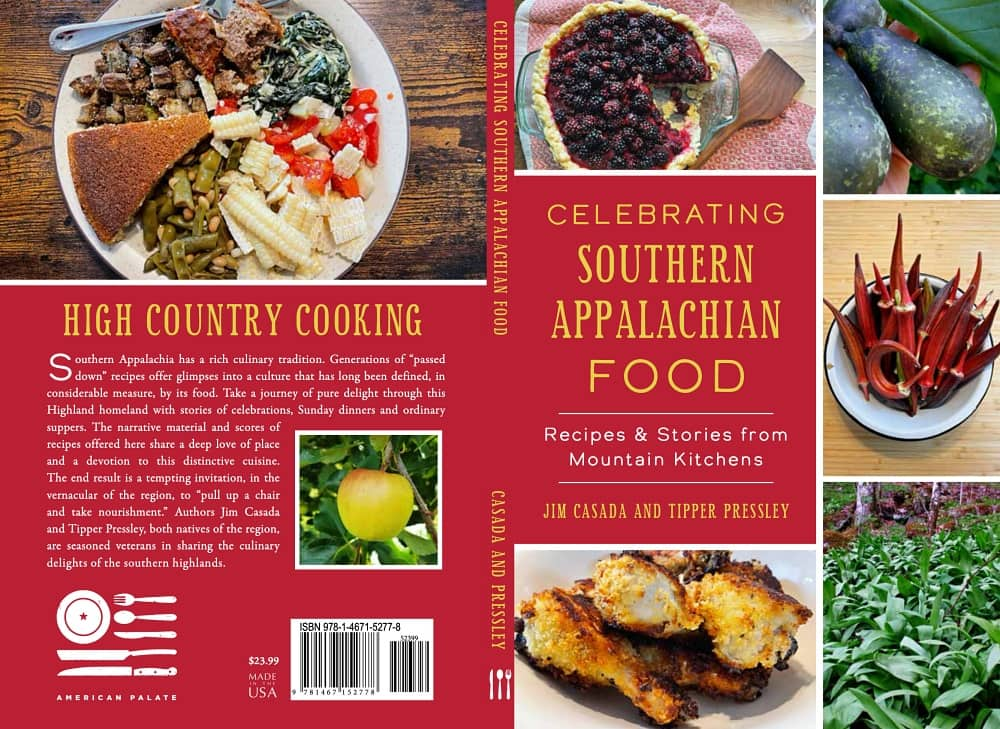
Meanwhile, Tipper Pressley and I have been working with our publishers in connection with pre- and post-publication plans for our forthcoming book, Celebrating Southern Appalachian Food: Recipes & Stories from Mountain Kitchens, which is schedule for release the first week in May. Incidentally, my pre-publication offer on the book for $23.99 and I’ll pay the postage still stands (checks or money orders only to me c/o Jim Casada, 1250 Yorkdale Drive, Rock Hill, SC 29730). We are excited about what they have in the works and of course for any writer a new book is sort of the literary equivalent of the birth of a child. It will be exciting for me but even more so for Tipper, since it’s her first book that’s being born.
Otherwise I’ve been plodding along on my usual writing work and in fact have a couple of pieces due right now. Also, in a surprising but welcome response, a move on my part in conjunction with Sporting Classics magazine to offer sporting books for sale has been going like gangbusters. There’s clearly a market for collectible sporting books AND folks who are selling off their own collections or disposing of those of deceased loved ones. My job is to describe the books and put a price on them, and heavy boxes have been pouring in. I’m swamped, but having plenty of work has never, in my world, been a bad thing.
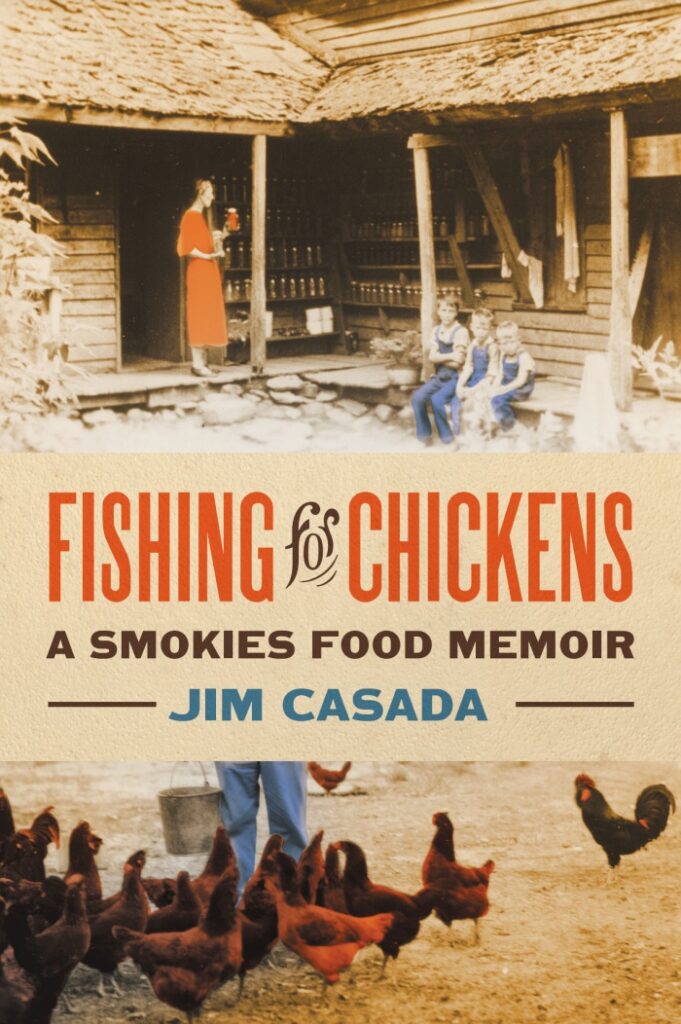
Speaking of books, I’m having an 18 x 18 storage shed built on a concrete slab I already had in place for their storage. For years I’ve rented two sheds for that purpose but an outfit from up North bought out the local owners and proceeded to almost double the rental price. I can have the shed built (the bare bones are up already) at a cost that I’ll recoup pretty quickly at the grossly inflated rental fee. It just took a catalyst of this type to get me off of square one, and once finished, it will be far more convenient than making a trip of several miles every time I needed to retrieve a stored item. Recent publications include “Soup as a Main Meal,” Smoky Mountain Living, Feb./Mar., 2023, pp. 16-19 and “Memories of Butchering Hogs: An Excerpt,” Smoky Mountain Living, Feb./Mar., 2023, pp. 20-21. The latter comes from my recent book, Fishing for Chickens: A Smokies Food Memoir. It has been nominated for several awards and as this month’s special book offering I’ll waive the $6 shipping and offer it at the list price of $28.99 (again, checks or money orders only).
FOCUS ON FOOD
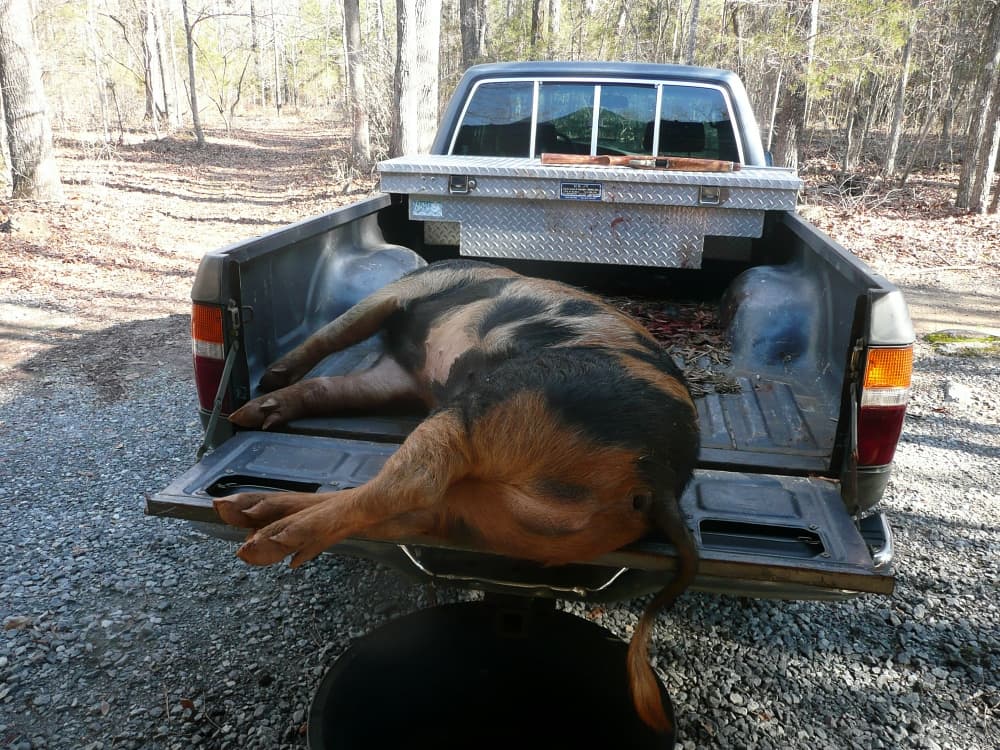
A couple of weeks back I joined two good friends, Darrin Dawkins and his son, Josh, for a hog butchering (they did virtually all the work—my involvement consisted of taking a bunch of photos, exercising my pie hole while reminiscing on similar moments from my childhood, and commenting on the developing process). Mind you, it was something of a challenge from the outset. Josh had acquired a live hog (a bar boar—bar or barr is the word used to describe castrated when applied to hogs) for a song. There was just one problem—it was way, way too large. I have no idea of its exact weight; suffice it to say that a tractor was required to load it into the bed of Josh’s truck after he shot it, and getting it from the truck onto a gambrel and hoisted up to a point where it could be gutted and worked butchered was quite an undertaking. I’ll just state what soon became all too obvious–when it comes to pork, particularly from a boar, bigger is not better.
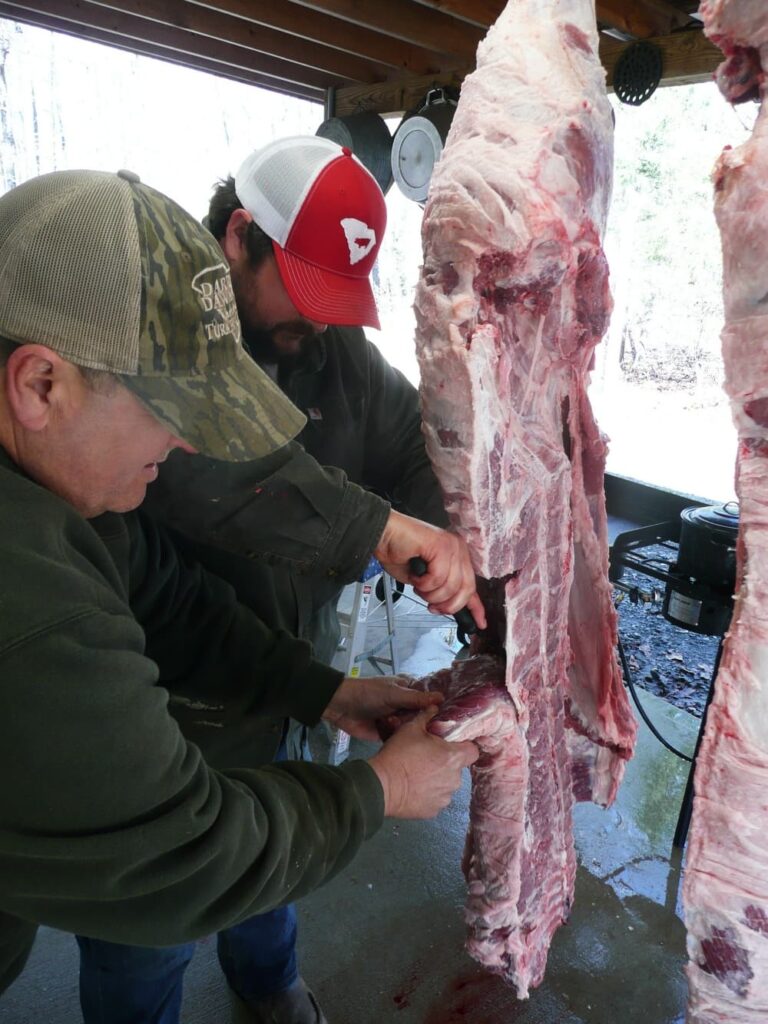
The meat tasted fine (Darrin friend up a few cutlets from the backstrap while things were being wrapped up) but the longer you chewed a bite the bigger it became. Tough is not the word to describe things. I did manage to salvage things with some of the backbones and ribs Josh graciously gave me, but it took a day of slow cooking in a crockpot, following by mincing up the meat and making pork chili, to make it edible. About the only other option would be sausage, although Josh is giving curing a try as he works on bacon and cured ham. My educated guess is that the next hog he kills and butchers will weigh closer to 100 pounds than 400 pounds. Still, the whole process set my mind running down all sorts of mental pig trails, and this month’s recipes reflect those mental excursions.
***********************************************************************************
RECIPES
POOR MAN’S PATE (OR HIGH COUNTRY FOIE GRAS)
First of all, before some readers start lambasting this hapless hillbilly’s lack of knowledge, I’ll have you know I’m aware of where the accent marks belong on the word pate and even have a marginal reading knowledge of French. I’m just too inept with a computer keyboard to be able to put the grave accent over the “A” and an acute accent over the “E.” So write that off to my not only being a fellow who enjoys a poor man’s riches when it comes to food but also falling into the category of being a passing poor hand when it comes to the intricacies of computers. Now, with that off my chest, let’s get down to practical matters in the form of food enjoyment.
In my youth we didn’t consume pate made from overstuffed ducks or the like, but the liver of hogs was turned to fine, and delicious, use in the form of liver mush. That’s a poor man’s pate. The preparation is really pretty straightforward provided you have the key ingredient—pork liver (heart meat can also be used).
INGREDIENTS (recipe can be halved, doubled, or otherwise contracted or expanded)
1 pound pork liver (trimmed and with the silver skin or membrane removed) cut into small chunks
2 pounds lean pork from a shoulder, shank, or Boston butt cut into small chunks
2 tablespoons sea salt
1 ½ cups slow-ground cornmeal
1¼ cups all-purpose flour
1 cup loosely chopped fresh sage or 2 tablespoons dried sage (if you like it—I don’t so I leave it out entirely)
1 ½ tablespoons black pepper or mixed black and red (cayenne) pepper
1 or 2 minced garlic cloves or a teaspoon garlic powder
2 tablespoons minced capers (optional)
Olive oil, vegetable oil, or lard for frying the finished product
Place the liver and lean pork in a large stockpot and add enough water to cover the meat. Bring the water to a boil and then reduce the heat to medium low and, with the pot covered, let the meat simmer until it is quite tender (about three hours). Remove the meat from the pot, setting the pot with the liquid aside. Combine the meat with the seasonings in a food processor (or chop thoroughly with an ulu or chef’s knife) and bring it to the consistency of hamburger meat. Add it back to the reserved liquid in the pot, bring to a simmer, and gradually add cornmeal and flour, alternating the two, until the mixture is thick. At that point, remove the pot and place the poor man’s pate in a deep loaf pan or similar receptacle. Place in a refrigerator overnight.
For the final and decidedly scrumptious step, slice the now congealed loaf of liver mush into slices about three-quarters of an inch thick and fry, having pre-heated your oil of choice, in a big cast-iron skillet. Brown to a nice crispiness on each side, turning only once. Talk about turning a cathead biscuit into heaven, this does it.
POOR MAN’S PATE—RECIPE 2
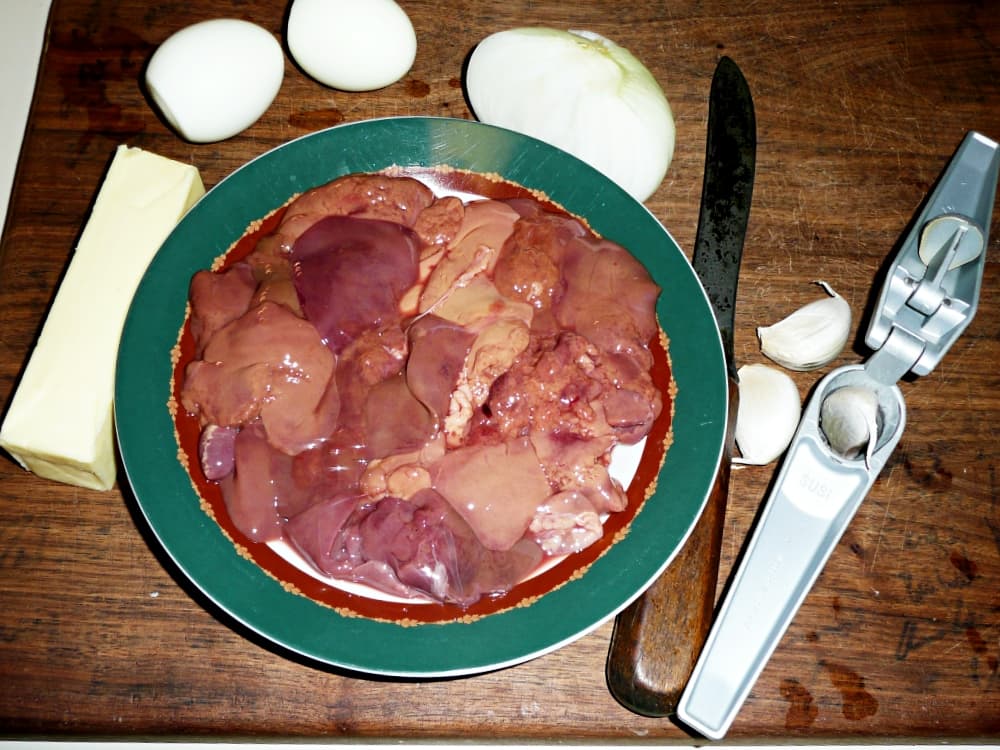
I’ve always been mighty partial to chicken liver whether it was fried, used in dressing, offered as a key ingredient in giblet gravy, or just retrieved from where it had been reinserted in the hollow left in a baking chicken after it had had its neck wring, feathers, plucked, been duly singed, and readied for the oven. Somewhere along the culinary road I’ve travelled I began saving the giblets (heart, liver, and gizzard) from wild turkeys I killed and freezing them. Once I had the giblets from three or four turkeys, it was time for some wild turkey (or yard bird) pate.
Preparation is pretty simple. Cook the giblets in butter on medium low heat until they are cooked through. Remove the meat and place it, along with any butter that has not been absorbed in the cooking process, in a blender and run on a coarse setting for a short time. Alternatively, if you like chunkiness and don’t want to bother with cleaning a blender after use, just chop the giblets up thoroughly using an ulu or chef’s knife. Once processed or chopped, add a couple of tablespoons of chopped capers (drain in advance), a tablespoon of bacon grease, and plenty of black pepper then stir until thoroughly mixed. Place the result in a terrine, small individual ceramic pots, or something similar and chill in the refrigerator for several hours. Upon removal from the fridge, the pate will be just the right consistency to spread atop crackers or toast points.
BACKBONES AND RIBS
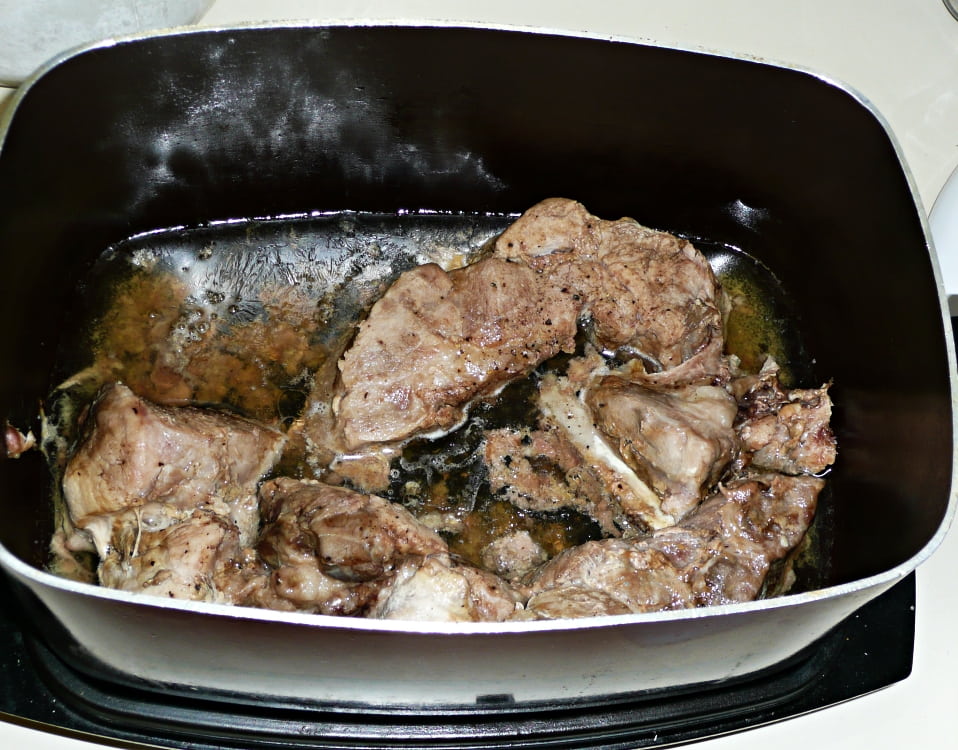
As much as I liked a couple of slices of pork tenderloin, dusted with flour and cooked in lard from the same hog, I reckon if pushed on the matter I’d have to say my favorite meal from a hog is a mess of backbones and ribs. Momma used to get them started in a pressure cooker right after breakfast, and after the meat had been in it for perhaps half an hour she’d switch everything to a big stew pot, add some water, and let it simmer for hour after hour. By suppertime the meat would literally fall from the bones and the tips of the ribs were so soft you could suck the marrow from them. In today’s world the process is somewhat simpler, although again the key element is time. Just cut up a mess of backbones and ribs so they fit the crockpot and set them to cooking. You may not be able to get them from your local grocer but if you know a country butcher or some who processes hogs, there’s your salvation. As an alternative you can just slow cook a rack of ribs, although with the meat right around the backbone the old saying “the closer to the bone the sweeter the meat” holds true. This was traditional New Year’s fare in my family but we had the dish at hog killing time and also canned chunks of the meat (cut away from the bone and cooked before being place in canning jars and processed) for consumption throughout the fall and winter. The only seasoning you’ll need is salt and black pepper, and with sides of soup beans, cornbread, and greens, you’ve got a top drawer feast.
CORNBREAD AND CROWDER PEAS
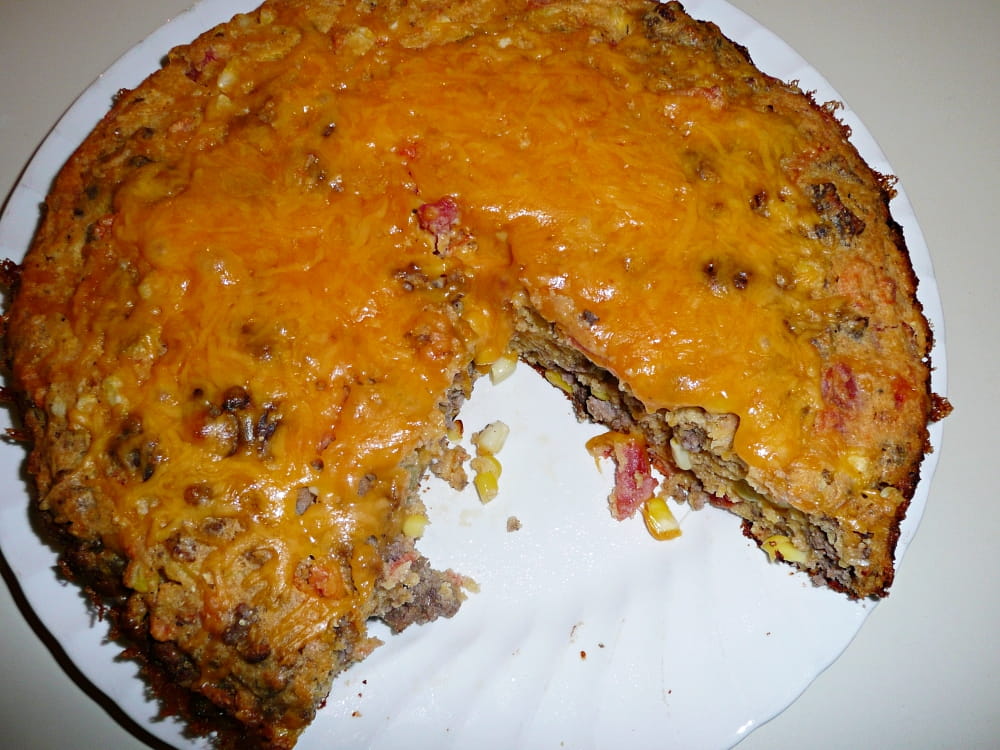
Most readers of this newsletter likely have sampled the sheer joy of a pone of crackling cornbread (and if you haven’t a cholesterol-laced treat awaits you) or savored the spicy joy of a slice of Mexican cornbread. I’ve long known of folks adding gritted corn straight from the cob or perhaps drained kernels from a can to their cornbread batter, and this recipe is in essence an offshoot of these varied approaches to knocking cornbread up a notch. It came to me while I was making a pone and happened to have some leftover crowder peas in the refrigerator. “Why,” I asked myself, “couldn’t they be added to batter in the same fashion as corn kernels?” I gave it a try and was mighty pleased with the outcome. Here’s the recipe, which is nothing more than my basic cornbread recipe with crowder peas added.
This is cornbread as it has long been made in my family, and with slight variations I think you’ll find the recipe which follows is fairly standard among the folks of southern Appalachia. Some key points, before we even get to the recipe, are: (1) Cook in a well-greased cast-iron skillet. (2) Grease the skillet with a piece of streaked meat or bacon before you pour in the batter. (3) Use stone-ground cornmeal. Store-bought stuff is ground at too high a rate and heat hurts flavor. Also, if you like a bit of crunch in your cornbread, and I do, stone-ground meal, even if sifted has more “body” to it. (4) Use buttermilk, not sweet milk. This recipe makes just the right size pone for a standard nine-inch cast-iron skillet.
1 extra large egg or two smaller ones
1 1/3 cups buttermilk
¼ cup bacon drippings
2 cups stone-ground corn meal
1 cup cooked, drained crowder peas
Mix all the ingredients except the crowder peas in a large bowl and whisk until thoroughly blended. At that point add the crowder peas, stirring only enough to spread them throughout the batter. Preheat your oven to 400 degrees and place the pan, well-seasoned by rubbing in a bit of the bacon grease or by running a piece of streaked meat across it after the pan is hot, in it for a few minutes. Then take out and pour the batter into the pan, return to oven, and cook until golden brown.